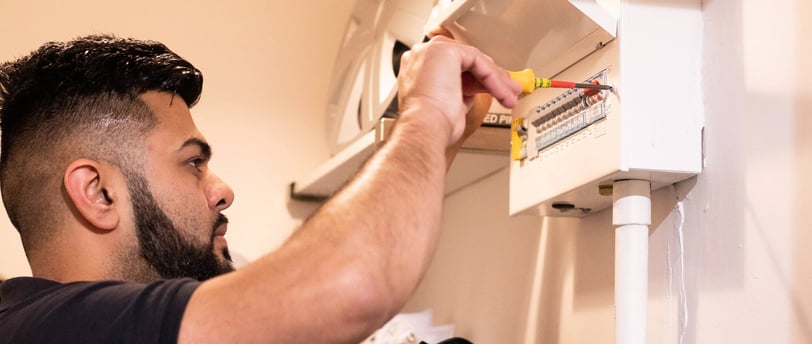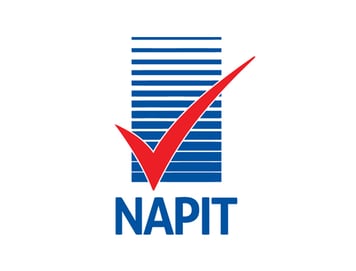Electrical Safety Checklist
Are you in the market for a new home – and not sure what to look out for? Use this electrical inspection checklist to guide you in the right direction so your move is as smooth and safe as possible.
Vishal Narbheram
1/24/20253 min read


Are you in the market for a new home – and not sure what to look out for? Use this electrical inspection checklist to guide you in the right direction so your move is as smooth and safe as possible.
These checks are primarily a guide to determine the age of electrical systems, since older properties with dated systems can be more hazardous and generally less lifestyle-friendly.
Socket & Switch Inspection
Socket Quantity
First, you need to check how many sockets there are in each room. If there are only one or two in each room, you may be tempted to use multiple extension leads. This should only be a short-term solution.
Fewer sockets in place means the house has an older electrical system. This isn’t ideal in the modern day, since more and more home accessories are using electricity.
Socket & Switch Installation
Next comes checking where the sockets and light switches are installed. There are some telltale signs of an old wiring system in a house, which increase the risk of electrical fires.
Problem signs include:
Sockets installed close to the floor or directly on the skirting boards
Light switches being installed inside the architrave (borders) of the doors
Socket & Switch Locations
Check where the sockets and switches are installed. If they are oddly spread around the house, such as in cupboards or behind doors, then they’ll inevitably be less convenient to use.
Socket & Switch Operation
This one is simple enough – do all the switches and sockets operate correctly? This inspection should also check for stiffness and the turning of dimmer switches. If there’s anything not working properly, you may want to query this with the home owner.
Signs of Overheating
Overheated sockets and switches are another clear sign of a dated wiring system, increasing the potential for fires and malfunctions in your home.The clearest signs of overheating are yellow marks or discolouring on and around sockets and switches. This is especially important to look out for with dimmer switches.
Light Fitting Inspection
Light fittings themselves can also show signs of potential danger in the home. Look out for pendant light fittings with braided, twisted cables. Similarly, the base of the light fittings should have a diameter of around 8cm, in accordance with modern technology.
If you notice discrepancies here, you’re probably dealing with an older property and a dated system.
Fuseboard Inspection
Fuseboards are the nerve centre of the electrical operations in your home, so checking that they’re safe is vital. Wooden and plastic fuseboards are a fire hazard and RCDs need to be installed to ensure safety. You should also check that the fuseboard has a recently-dated inspection sticker on it to be confident it’s been tested properly, last checked should be within 5 to 10 years which would be labelled on the fuseboard itself.
Cable Checks
Cable Protection
Any cables that are connected to skirting boards or around door frames should be well-protected, whether in trunking or conduit. Even the smallest cut in a cable could lead to serious malfunction, or even electric shocks.
Earth Bonding
Under your main water isolator and gas meter, you should see a large green and yellow cable about 1cm round. If it’s not there, the earth bonding might not have been installed correctly.
Smoke Alarm Inspection
It’s important to ensure that smoke alarms are installed in the property. This should include.
A heat alarm in the kitchen
A Co2 alarm near any gas boilers
Smoke alarms in the hallways
These alarms should all be hardwired into the home’s main system and feature battery backups, otherwise you could be at a higher degree of risk in the instance of a fire or gas leak.
Building Inspection-
Check out your building inspection report to see if they recommend any additional testing as this is also a good direction to follow.
EICR Inspections
It’s important to know when the last EICR inspection took place on the property. If it was a long time ago, we highly recommend you have one carried out before you commit.
Hopefully, you won’t find any of these issues – but with this electrical safety checklist, you know what steps to take if you do! If the home is bringing up lots of issues according to the list, then a check is ESSENTIAL, followed by all the necessary repairs.
If you ever need mental health support feel free to reach out to Onward Shift
Quick Links
At Ohm Sweet Ohm Electrical Services, we’re dedicated to delivering exceptional electrical solutions with a personal touch. Based in Colchester and serving Essex, we combine 15 years of expertise with a passion for creating spaces you’ll love. Whether it’s a small fix or a large project, we’re here to make your ideas come to life.
© 2025 Ohm Sweet Ohm Electrical Services. All Rights Reserved. Company Number 16141635.
Terms and Conditions / Privacy Policy / Cookie Policy
Dedicated to Excellence
Get in Touch
Phone: 07342 676245


